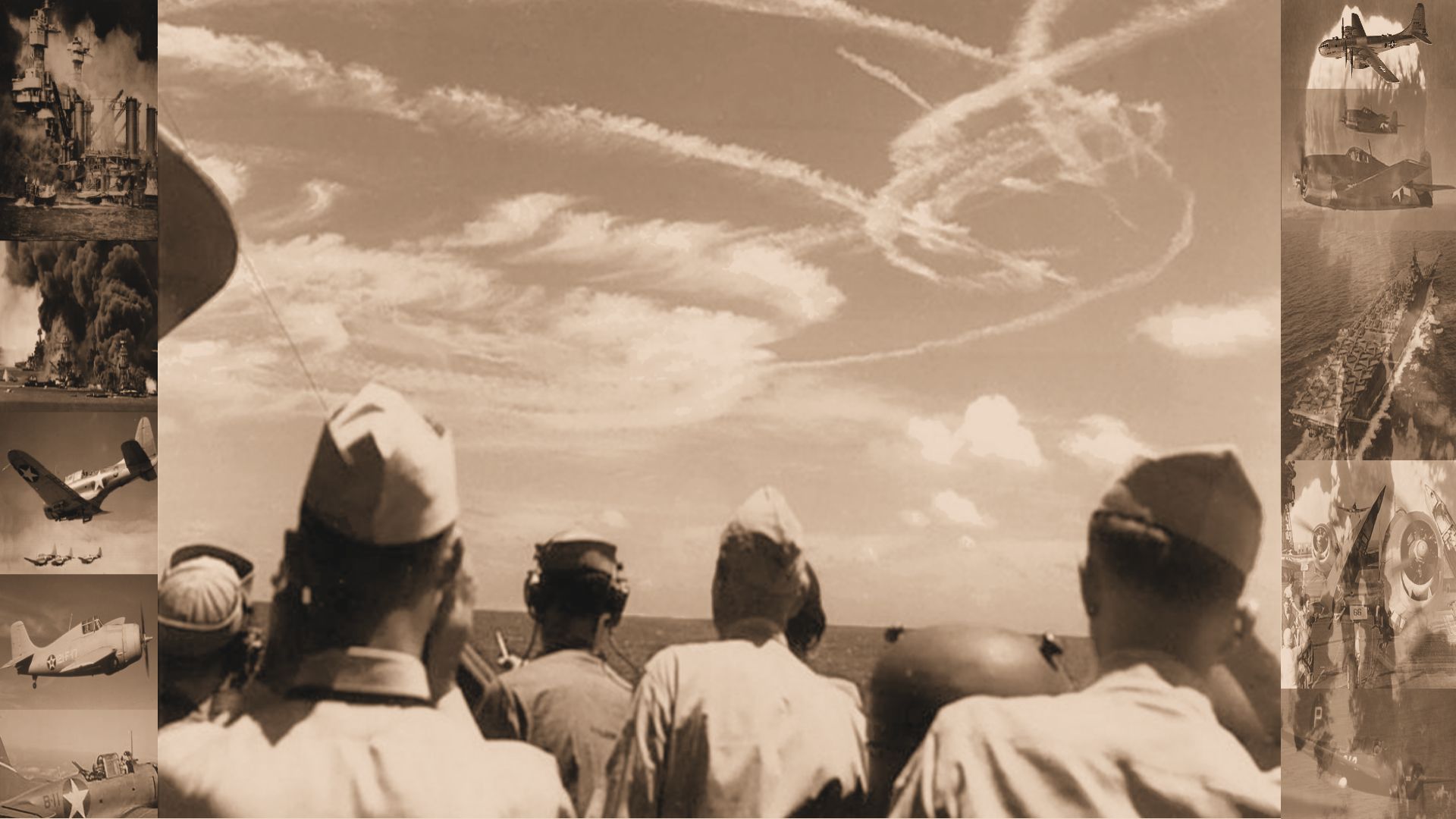 Grumman F4F 'Wildcat'
Grumman F4F 'Wildcat'
The Grumman F4F 'Wildcat' was an American carrier-based fighter aircraft that began service with both the United States Navy and the British Royal Navy (as the 'Martlet') in 1940. First used in combat by the British in Europe, the Wildcat was the only effective fighter available to the United States Navy and Marine Corps(USMC) in the Pacific Theater during the early part of World War II in 1941 and 1942, the disappointing Brewster F2A 'Buffalo' was withdrawn in favor of the F4F 'Wildcat' and replaced as units became available. With a top speed of 318 mph (512 km/h), the F4F was outperformed by the faster 331 mph (533 km/h), more maneuverable, and longer ranged Japanese Mitsubishi A6M 'Zero'. Grumman's Wildcat production ceased in early 1943 to make way for the newer F6F 'Hellcat', but General Motors continued producing Wildcats for both U.S. Navy and Fleet Air Arm use. At first, GM produced the FM-1 (identical to the F4F-4, but with four guns). Production later switched to the improved FM-2 (based on Grumman's XF4F-8 prototype) optimized for small-carrier operations, with a more powerful engine, and a taller tail to cope with the increased torque.
Back to Top
Development
Grumman fighter development began with the two-seat Grumman FF biplane. The FF was the first U.S. naval fighter with a retractable landing gear. The wheels retracted into the fuselage, leaving the tires visibly exposed, flush with sides of the fuselage. Two single-seat biplane designs followed, the F2F and F3F, which established the general fuselage outlines of what would become the F4F Wildcat. In 1935, while the F3F was still undergoing flight testing, Grumman started work on its next biplane fighter, the G-16. At the time, the U.S. Navy favored a monoplane design, the Brewster F2A-1 Buffalo, ordering production early in 1936. However, an order was also placed for Grumman's G-16 (given the navy designation XF4F-1) as a backup in case the Brewster monoplane proved to be unsatisfactory. It was clear to Grumman that the XF4F-1 would be inferior to the Brewster monoplane, so Grumman abandoned the XF4F-1, designing instead a new monoplane fighter, the XF4F-2.
Back to Top
In Action
The Wildcat was outperformed by the Mitsubishi A6M 'Zero', its major opponent in the early part of the Pacific Theater, but held its own partly because, with relatively heavy armor and self-sealing fuel tanks, the Grumman airframe could survive far more damage than its lightweight, unarmored Japanese rival. Many U.S. Navy fighter pilots also were saved by the F4F 'Wildcat's' ZB homing device, which allowed them to find their carriers in poor visibility, provided they could get within the 30 mi (48 km) range of the homing beacon. In the hands of an expert pilot using tactical advantage, the Wildcat could prove to be a difficult foe even against the formidable A6M 'Zero'. After analyzing Fleet Air Tactical Unit Intelligence Bureau reports describing the new carrier fighter, USN Commander 'Jimmy' Thach devised a defensive strategy that allowed Wildcat formations to act in a coordinated maneuver to counter a diving attack, called the 'Thach Weave'. By 1943 however, the US Navy were recieving the newer F6F Hellcats which became the frontline aircraft with the F4F being relegated to secondline duties aboard the escort carriers.
In the Eurpopean theatre of operations, the U.S. Navy FM-1 Wildcats participated in Operation Torch(the invasion of North Africa by US forces in November 1942) and used by escort carriers in the Atlantic patrolling against U-boats on the surface and chasing away the Fw200 'Condor' reconnaissance aircraft.
Back to Top
Foreign Service
U.S. Navy orders followed as did some (with Wright Cyclone engines) from France however after the fall of France these ended up with the Royal Navy's Fleet Air Arm and entered service on 8 September 1940. These aircraft, designated by Grumman as G-36A, had a different cowling from other earlier F4Fs and fixed wings, and were intended to be fitted with French armament and avionics following delivery. In British service initially, the aircraft were known as the 'Martlet I', but not all Martlets would be to exactly the same specifications as U.S. Navy aircraft. All Martlet Is featured the four .50 in (12.7 mm) M2 Browning machine guns of the F4F-3 with 450 rpg. The British directly ordered and received a version with the original Twin Wasp, but again with a modified cowling, under the manufacturer designation G-36B. These aircraft were given the designation 'Martlet II' by the British. The first 10 G-36Bs were fitted with non-folding wings and were given the designation Martlet III. These were followed by 30 folding wing aircraft (F4F-3As) which were originally destined for the Hellenic Air Force, which were also designated 'Martlet III'. On paper, the designation changed to 'Martlet IIIA' when the second series of Martlet III was introduced.
Back to Top
In all, 7,860 Wildcats were built. During the course of the war, Navy and Marine F4Fs and FMs flew 15,553 combat sorties (14,027 of these from aircraft carriers), destroying 1,327 enemy aircraft at a cost of 178 aerial losses, 24 to ground/shipboard fire, and 49 to operational causes (an overall kill-to-loss ratio of 6.9:1).


